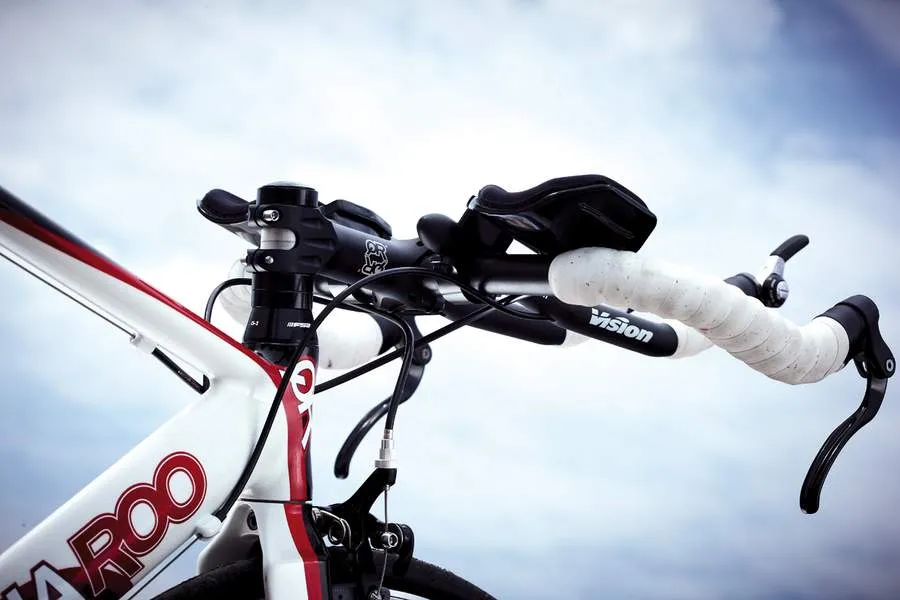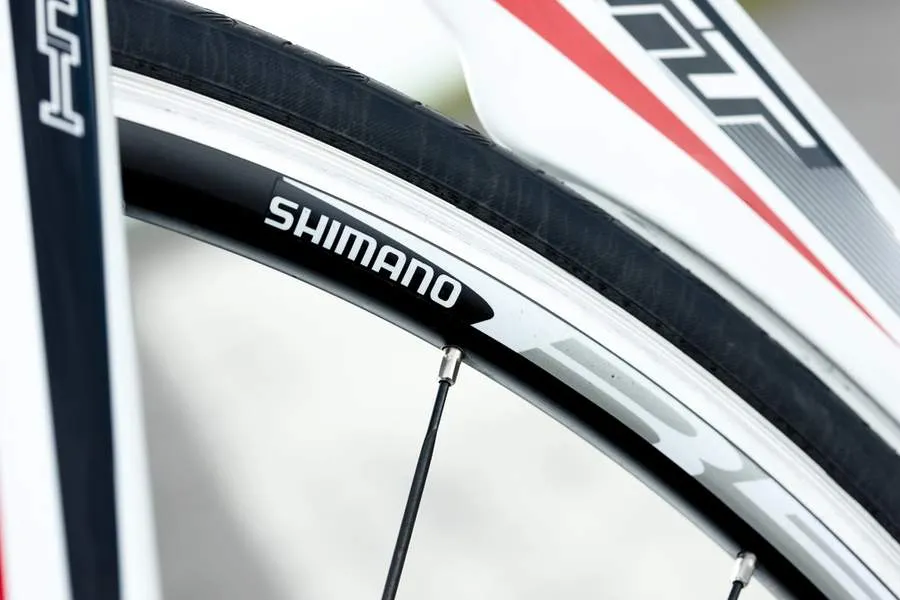Quintana Roo are not only the longest- established tri bike brand, but also the only brand that concentrates solely on triathlon. The Tequilo is the cheapest way to get into this exclusive club, offering the same radically aero fit as the other Quintana Roos on a top-quality alloy chassis.
At just over 1.5kg the alloy frame is relatively heavy when compared to others in its class. Where Quintana Roo score though is with a super-short 90mm head tube creating the lowest front end we’ve seen for ages. The oval down tube and small diameter oval top tube get simple external cable-routing, while the twin-bolt seatpost clamp (with replaceable thread inserts) is built into the round-to-bladed wheel hugger seat tube.
Deeply bladed seat stays and tapered chainstays join at horizontal dropouts with thumbwheel adjusters, to give accurate wheel positioning. Twin bottle cages, smoothed welds and flared aero fork legs finish the chassis in neat, practical style.
Even at £150-£250 cheaper than many others we've reviewed latelym you might expect a kit dividend for ‘only’ getting an alloy frame. But Q Roo just add an Ultegra rear mech to the 105 mix. Old school 25.4in diameter bars add comfort and the whole cockpit fits well. Q Roo-branded Alex wheels are decent quality too, even if a lighter set of proper aero wheels is an obvious upgrade.
The spongey, non-cartridge brake pads need replacing first though. The matt finish alloy seatpost is also very easily marked and the rotating top section isn’t the lightest or most elegant solution to switching your seat angle either. The saddle is OK if you get the nose tipped down low enough to cope with the extreme position.
The Tequilo is also rather heavy and doesn’t hurry out of the blocks. There’s a slight softness between crank and road compared to most alloy bikes, and the standard diameter bars twist noticeably when you start heaving hard. This all means longer climbs tend to be endured rather than enjoyed, but reasonably light wheels stop it feeling too dull.
Where it excels is exactly where an aero bike should - flat, fast sections - and it’s got a super low cockpit position. Yes, it’s lower than most riders will be able to get into efficiently and comfortably without a lot of practice and gradual lowering of the bars. It’s so flat-backed that on one max speed run over rough Tarmac we even managed to rattle our mini pump out of the top of a jersey back pocket and round to the belly of our gilet, which is a first in a decade of testing. You’ll also need to be careful dropping straight into a deep tuck after a full effort-standing climb, as the sudden constriction of belly and breathing nearly made us puke a couple of times.
Stretch and practise your way into the flat-backed tuck and you’ll immediately feel the wind lose its grip on you and see the speedo start to rise dramatically. The further and faster you go, the more that positional advantage will impact your times, so there’s a real incentive to getting those spacers out from under the stem.
Despite the radical position, the Tequilo handles beautifully in a tuck too – steady enough to let you relax and get on with turning the pedals, or blitz through open corners without having to sit up and brake. Its reactions are still rapid enough to navigate the nastiest pot-hole sections, even with narrow 400mm wing bars.
We had no slur or inaccuracy problems when picking a line through the low front end and flared forks. We’re always glad to have Continental tyres on when it turns wet halfway through a ride too. One thing we weren’t expecting from an alloy bike though was a smooth and comfortable ride. Yes, the occasional pothole or rough section rings through with a real thump – particularly at lower speeds – but get it moving and it glides over most surfaces impressively well.
Even right into the tuck we weren’t suffering undue back or shoulder fatigue, with only our necks getting tired until we were more used to having to look up higher to find the road. The lack of jarring road feedback also makes it much easier to maintain a smooth spin or keep traction on hills, which was a big part in our positive opinion of a bike we initially thought might be at a real disadvantage against the carbon competition.





